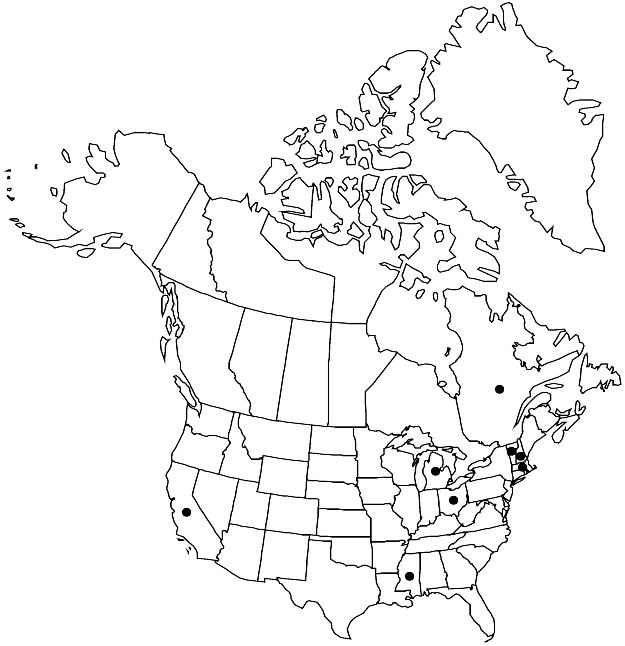Aurinia saxatilis
J. Bot. Agric. 3: 162. 1815.
Plants often woody at base; finely stellate-pubescent. Stems: usually several, 1–5 dm. Basal leaves: petiole 0.5–3 (–4) cm, blade spatulate to obovate or lanceolate, (2.5–) 4–8 (–12) × 0.5–1.5 (–2.5) cm, base cuneate to attenuate, margins entire, repand, or sinuate-dentate, apex acute or obtuse, surfaces densely pubescent. Cauline leaves: blade oblanceolate to linear. Racemes slightly elongated in fruit. Fruiting pedicels (3–) 4.5–10 (–13) mm. Flowers: sepals yellowish, scarious at margins, finely pubescent, 1.5–2.3 × 0.5–1 mm; petals 3–6 × 1–2.5 mm, attenuate to clawlike base; filaments with basal wing or appendage to 0.5 mm, 1–2 mm; anthers 0.3–0.5 mm. Fruits divaricate-ascending, broadly obovate to orbicular, flattened, strongly latiseptate, 3.5–9 mm in diam.; style 0.5–1.5 (–2.5) mm. Seeds winged throughout, 2–3 mm diam.; wing 0.3–1.1 mm wide. 2n = 16.
Phenology: Flowering May–Jul.
Habitat: Ledges, cliffs, rocky slopes
Distribution

Introduced; Que., Calif., Mass., Mich., Miss., N.H., Ohio, Vt., c, se Europe, Asia (Turkey)
Discussion
Aurinia saxatilis is widely cultivated as an ornamental and likely naturalized in other states. It is highly variable in its native range (Turkey, southern and central Europe) and has been divided into three subspecies, of which subsp. saxatilis is naturalized in the flora area.
Selected References
None.
Lower Taxa
"elongated" is not a number."thick" is not a number."dm" is not declared as a valid unit of measurement for this property.
